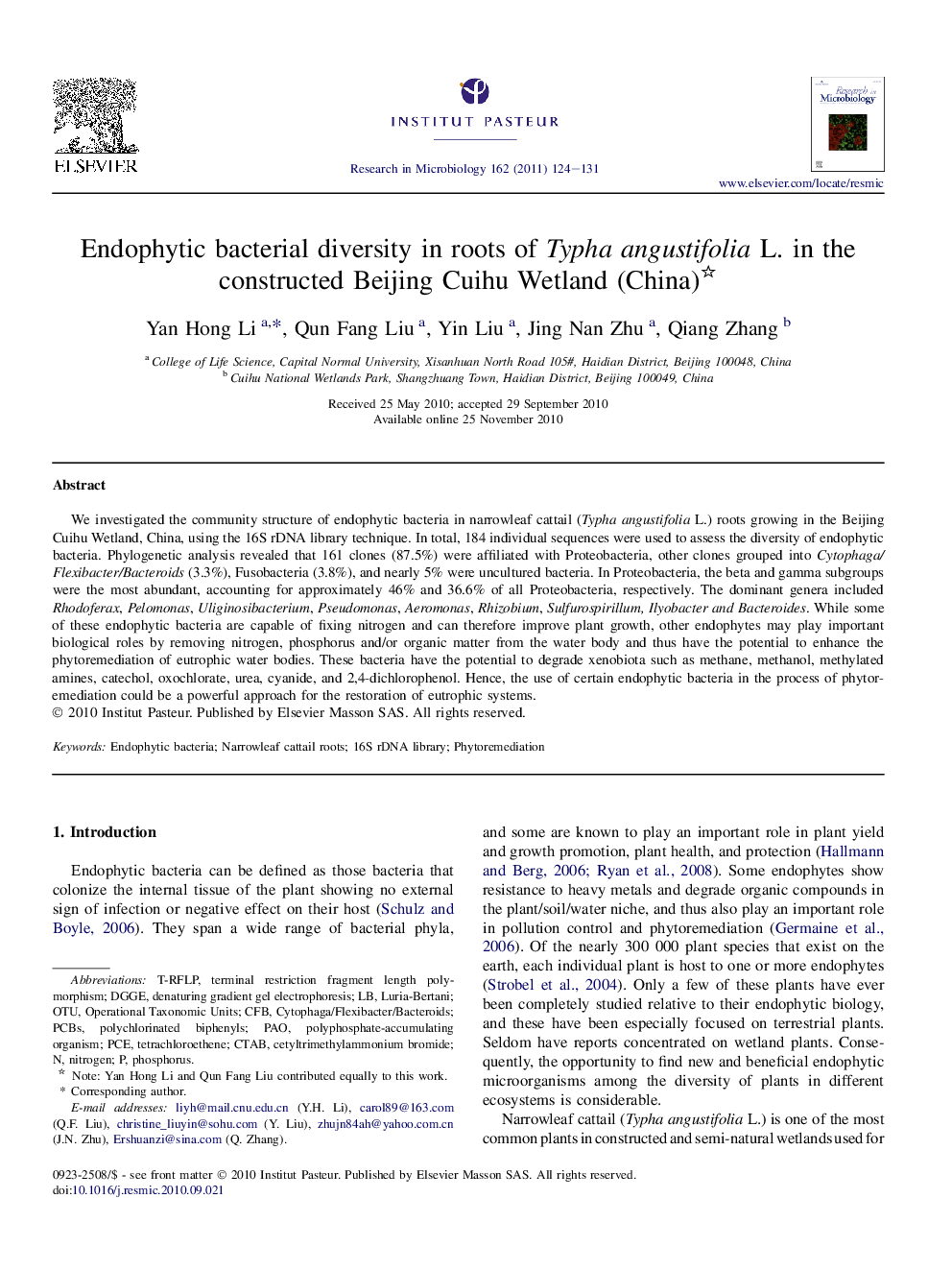| Article ID | Journal | Published Year | Pages | File Type |
|---|---|---|---|---|
| 6288180 | Research in Microbiology | 2011 | 8 Pages |
Abstract
We investigated the community structure of endophytic bacteria in narrowleaf cattail (Typha angustifolia L.) roots growing in the Beijing Cuihu Wetland, China, using the 16S rDNA library technique. In total, 184 individual sequences were used to assess the diversity of endophytic bacteria. Phylogenetic analysis revealed that 161 clones (87.5%) were affiliated with Proteobacteria, other clones grouped into Cytophaga/Flexibacter/Bacteroids (3.3%), Fusobacteria (3.8%), and nearly 5% were uncultured bacteria. In Proteobacteria, the beta and gamma subgroups were the most abundant, accounting for approximately 46% and 36.6% of all Proteobacteria, respectively. The dominant genera included Rhodoferax, Pelomonas, Uliginosibacterium, Pseudomonas, Aeromonas, Rhizobium, Sulfurospirillum, Ilyobacter and Bacteroides. While some of these endophytic bacteria are capable of fixing nitrogen and can therefore improve plant growth, other endophytes may play important biological roles by removing nitrogen, phosphorus and/or organic matter from the water body and thus have the potential to enhance the phytoremediation of eutrophic water bodies. These bacteria have the potential to degrade xenobiota such as methane, methanol, methylated amines, catechol, oxochlorate, urea, cyanide, and 2,4-dichlorophenol. Hence, the use of certain endophytic bacteria in the process of phytoremediation could be a powerful approach for the restoration of eutrophic systems.
Keywords
16S rDNA libraryT-RFLPtetrachloroetheneCFBDGGEPCBsPAOPCECTABOTUcetyltrimethylammonium bromideEndophytic bacteriaPolychlorinated biphenylsDGGE, denaturing gradient gel electrophoresisPhosphorusterminal restriction fragment length polymorphismLuria-BertaniNitrogenOperational taxonomic unitsPhytoremediation
Related Topics
Life Sciences
Immunology and Microbiology
Applied Microbiology and Biotechnology
Authors
Yan Hong Li, Qun Fang Liu, Yin Liu, Jing Nan Zhu, Qiang Zhang,
